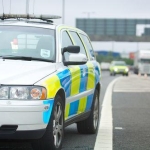Christmas may be over but the dangers of drinking and driving remain, as Joanne Berry of legal firm Pannone explains.
Christmas and the New Year period are recognised as times when we might drink more than usual and take appropriate precautions. However, it is vital that you enjoy yourself safely and without any risk of danger at all times. Many motorists are unaware of the dangers of ‘morning after’ driving. One in seven overall road deaths in UK result from crashes where the driver was over the legal alcohol limit.
Lucia Delkoshnavaz had the strength to appear on This Morning to help raise awareness of the dangers of ‘morning after’ driving. She lost her father to a drink driver who had made the decision to drive the morning after drinking alcohol. Antonio Ricci, who was 79, was on his way for his usual morning paper and was crossing the road close to his home, when he was struck by a car driven by Charlotte Roberts, who was found to be over the limit. Charlotte was convicted of causing death by careless driving whilst over the prescribed limit and sentenced to 15 months imprisonment and a three year disqualification from driving, but the damage to Lucia and her family by the loss of Antonio continues.
I have previously blogged about Lucia’s story and urge you to spare 5 minutes to watch her short interview on This Morning, which has had much more impact than my words can portray in this article.
According to police figures, the number of motorists arrested for drink-driving the morning after, has risen quite significantly. Data shows that arrests between the hours of 6am and 8am have risen from 350 in 2011 to 363 in 2012 – an increase of 4%.
A study conducted by LV, found that one in five drivers thought they were “OK” to drive the following morning after drinking. Approximately 46% of those surveyed, did not realise the duration at which alcohol remains in the body. The results concluded that the average driver consumed 19 units the night before and were on average, five hours away from being sober enough to drive behind the wheel the morning after consumption.
During December, drink driving increases and in recent years this has resulted in a 10% increase in incidents occurring.
A survey of 1,688 drivers also found that:
- 37% said driving the following morning was unavoidable
- 26% said they were only going a short distance
- 7% thought it was acceptable to drive but avoid motorways
- 13% thought they were only slightly over the limit so it wasn’t an issue.
It takes approximately 1 hour for 1 unit of alcohol to be processed through a healthy liver, according to the NHS. This can vary depending on a variety of factors including type of alcohol, sex, metabolism, age and weight.
Anybody who is found to be drink-driving can face a 12 month driving ban and a fine of up to £5,000. The size of the fine depends purely on the seriousness of the offence; some punishments can lead to imprisonment of up to six months.
If you are caught more than once in a ten year period then you will face a driving ban for at least three years.
Know the law
The alcohol limit for drivers in the UK is 80 milligrams of alcohol per 100 millilitres of blood, 107 milligrammes per 100 millilitres of urine and 35 micrograms per 100 millilitres of breath.
Throughout most other European countries the limit is significantly lower at 50 milligrams per 100 millilitres of blood.
How does alcohol effect your driving?
- Decrease in reaction time
- Poor judgement of distance and speed
- Over-confidence
- Increase in stopping distance
- Reduced vision.
Dr Jonathan Ling, lecturer in Public Health at the University of Sunderland, explains how important education and enforcement are to allow the decrease of drink driving related incidents on UK roads: “Any successful intervention aimed at tackling drink driving has to have two elements – education and enforcement. For several years the government has been successful in reducing, year on year, fatalities related to drink driving, and there is also good evidence that people are less likely to drink drive given the percentage of people failing breath tests”. Are there still fatalities and road accidents related to alcohol use? Yes. But the strategy adopted is having a measurable and positive impact on the likelihood of people getting behind the wheel when they’ve had too much to drink”.
Mike McAdam, founder of ‘Don’t be that someone’ believes that the current Department for Transport drink driving awareness campaigns need a shakeup. “Currently the Department for Transport do not target 14-18 year olds in their drink drive campaigns, despite research that shows driving safety attitudes are established before you reach the age of driving. If the Government really want to see deaths, injuries and collisions reduce, they need to target pre-drivers to change their fundamental attitudes so they don’t drink and drive in the first place”
The author blogs at www.pannone.com
